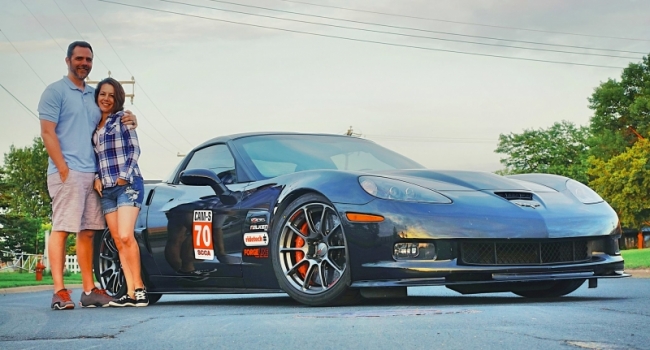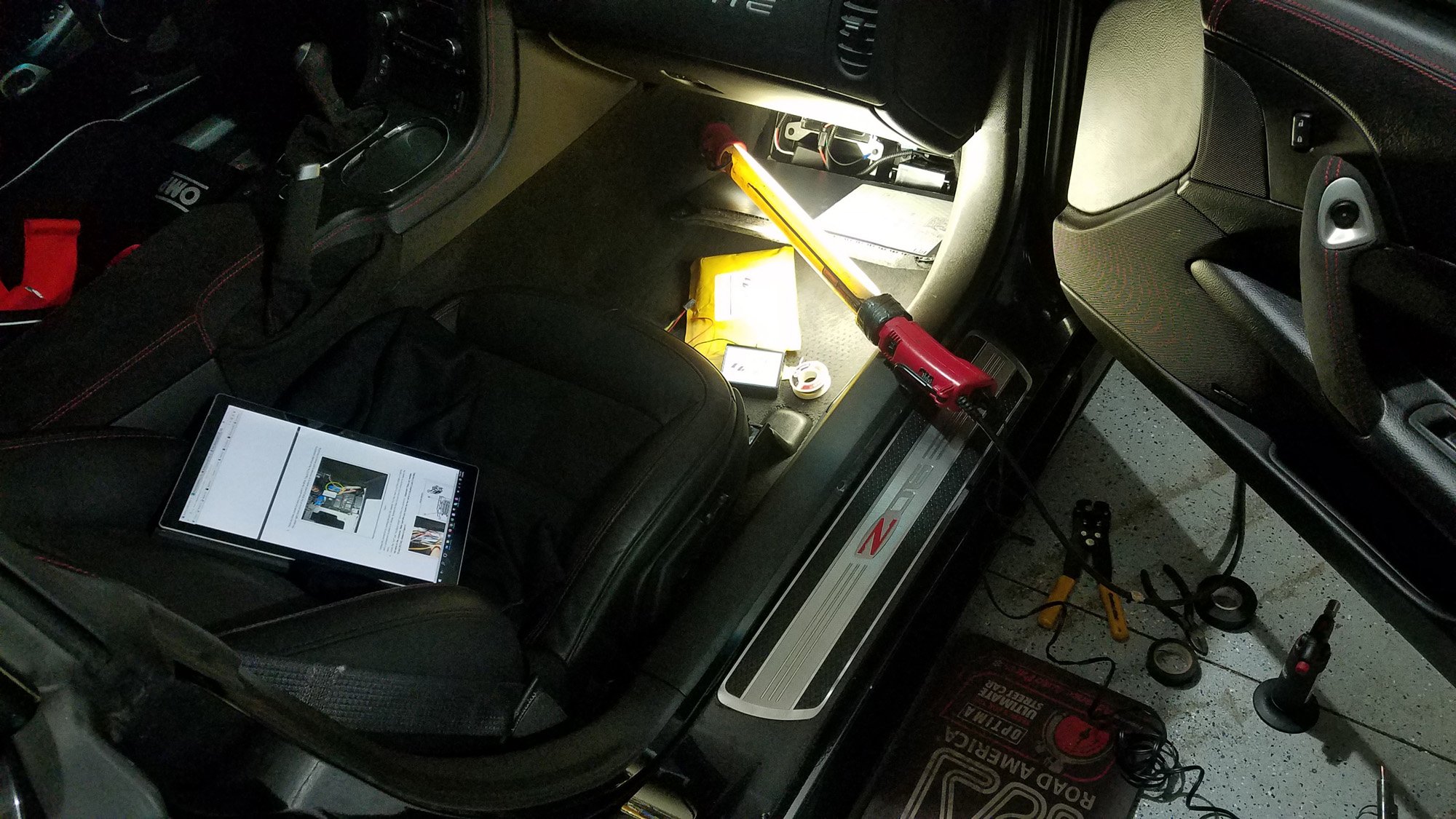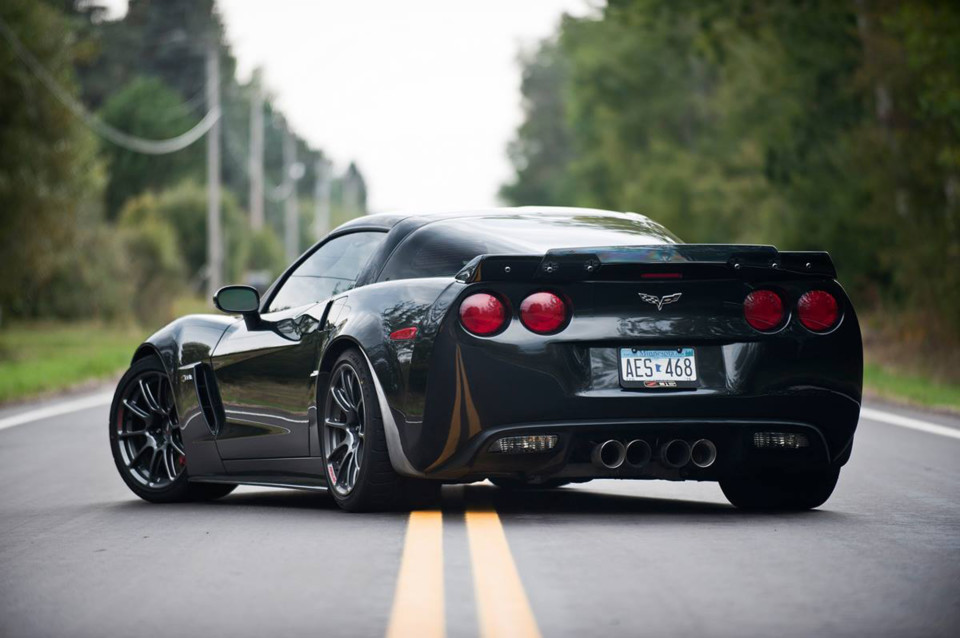When we left off on Part Two, we had just wrapped up the essential pieces to responsible C6Z Corvette ownership. Now, we could have stopped there and had a real screamer of a car. But we aren’t the type to leave well enough alone.
I remember a conversation that Jeremy Clarkson had on Top Gear with Matt LeBlanc. Clarkson was commenting on how Americans just cannot leave their cars stock from the factory and I have often felt LeBlanc’s response was just not adequate. I’ll paraphrase; he essentially said: We don’t want something someone can just go out and buy themselves; we want to personalize our cars.
There’s so much more to it than that. You see, I think it’s pretty damn American to want to fiddle with, differentiate, and push the limits of our toys to see what they really can do. That said, I have been told, to my face: “What? You think you’re smarter than an entire team of GM engineers?”
My answer has been and always will be: GM has a lot of regulatory constraints and customer expectations to deal with; I do not. Therefore, I can improve my car however I see fit and yes, many upgrades make the car faster than originally intended. I look at the Corvette as a great base to build upon. Start with a good car and you can make a great car.
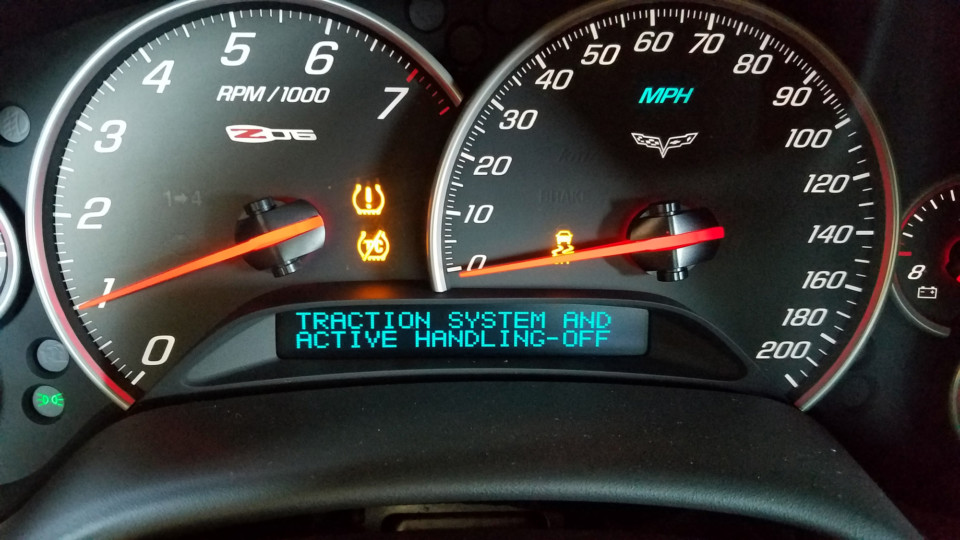
When you install the LG Track Box, it comes with two modes, Street and Track. When in Street Mode, it will act as a normal setup would. However, in Track Mode, it will start the car with traction control and active handling turned off and in ‘race’ mode by default.
So, where do you go after the safety measures and horsepower concerns are addressed? All that’s left is making it swerve left and right — more zig, more zag. We need to get rid of the nanny-state oppression that is the mag-ride system, also known as F55. I’m fully aware the C6Z comes with “competition mode” but the shocks only respond to the predetermined program and there’s no way for me to adjust this to my driving style.
Electronic Defeatism
For those wanting to overcome the electronics in the C6 platform, you’ll need a couple of tools and bypass mechanisms. First, you’ll need to defeat the F55 system; there are two ways to do it.
The Magnetic Ride that GM put on the car is pretty decent for what it is, but it’s not quite the same when steering with your butt-dyno. You can easily overpower the traction control and active ride handling. It can be quite jarring when the car thinks I should be slowing down, when in fact I want to be going faster. As mentioned, the car does have “competition mode”, which essentially turns everything down to its lowest settings, but it is still there.
The only way to get the car to behave exactly as you want it, is to remove the F55 shocks and replace them with coilovers. Which is exactly what we did. Seems a shame to throw low-mileage parts into a bin, but progress waits for no man. The original, transverse springs were unbolted and put in the parts pile; replaced with coilovers.
It’s amazing how much goes into tricking an ECU. We have F55 Mag-Ride simulators, the LG Track Box that eliminates the TPMS sensors in the wheels and the yellow sims are for the air-bag lights on the dash for the driver’s seat. Under the passenger footwell, you’ll find the BCM and the specific wiring needed to splice in the LG Track Box.
The shocks weren’t too terribly difficult to replace, with the exception of the fronts. They required a special tool we didn’t have, or one tiny wrench (7mm) and one big wrench and a lot of patience. The tricky part was finding a set of F55 sim plugs which usually run a couple hundred bucks from the usual sources. After running them for the season, in my opinion, they are probably not worth the plastic they are molded into. I still get an error code which limits my MPH to 168. The money would be better served purchasing a basic Tech II from Amazon and editing the F55 code out of the system.
Tech II Editing
The second way to remove the pesky error codes can be made permanent with editing software. The best version I have found is the VXDIAG VCX Nano GDS2 tool ($125). It’s an OBDII port which comes with software and a USB cord that taps right into the GM software to turn the F55 completely off. In the software, it is called “FTD Suspension” and needs to be disabled. This eliminates the computer hunting for the magnetic shocks and ride-height sensors, allowing you to run any setup you desire.
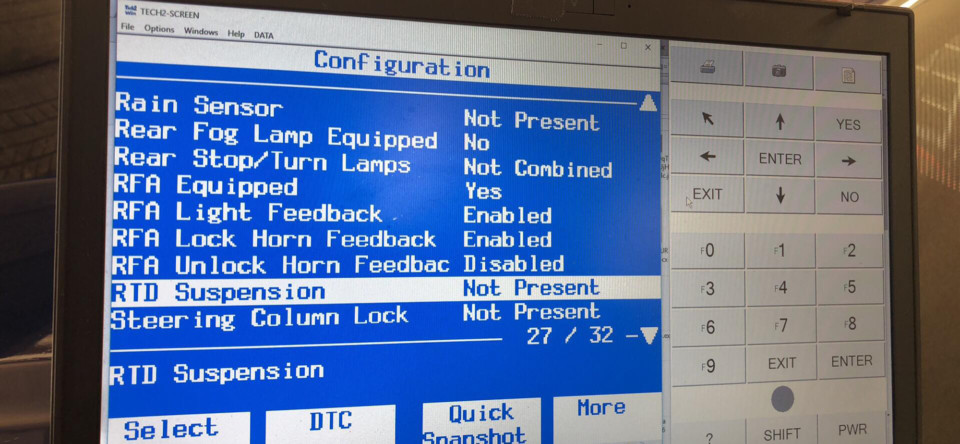
When connecting the Tech II tool to your laptop, you’ll need to find the “RTD Suspension” parameter and make sure it is disabled.
LG Track Box
This little box is sold by LG Motorsports for around $400. It allows you to run low air pressure in your tires or run completely TPMS-free. The LG Track Box is a small device which splices directly into the BCM harness located in the footwell of the passenger area. This is also where you install a Mild-2-Wild controller as well. The wiring isn’t difficult, but it is a bit of a tight squeeze under the dash if you are taller than say, Danny DeVito.
This took me the better part of an hour, cutting and splicing the wires according to the instructions. The gauge cluster will read “XX” for all tire pressures and automatically put the car into Track Mode at start-up, turning off the traction control and active handling. Pressing the traction control button on the center console will bring it back into function. You cannot turn off the ABS with this device, which isn’t advisable anyway if you truly don’t know what you’re doing.
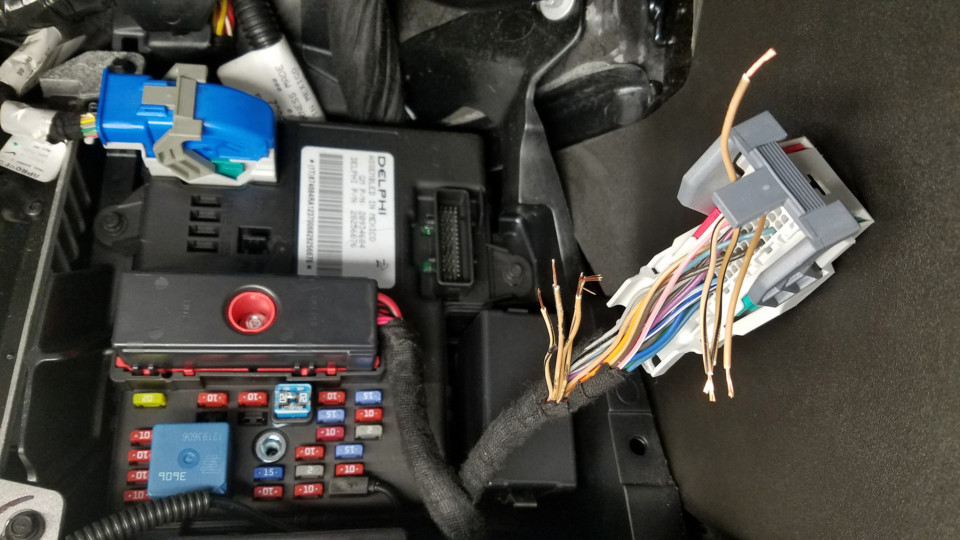
When splicing in the LG Track Box, finding the correct wires can be a bit of a hassle since they look very similar. Going slow and methodical gets the job done.
The only downside to the Track Box is you will still get a TPMS warning code on the dash. When I called to ask why it still throws a dash alert, I was told it wasn’t something they could override and I’d have to live with. It does allow you to run TPMS-free without going into any limp mode. This means I can run my tires at a low 22psi (rear) and 24psi (front) during my autocross runs, which suits my driving style.
An Exhaustive Solution
The stock ZR1 exhaust is “fine”, just like you could drive a boring car every day which is fine. However, I’m not content with fine and need more growl with my bite. My car was outfitted with a Mild-2-Wild switch to override the dual-mode (optional, RPO-code NPP) exhaust when I purchased the car, but still wasn’t the sound I was going after. Thankfully, the C6 platform has virtually limitless aftermarket companies ready to sell almost anything your little heart desires.
When I scoured the forums, the name Billy Boat Exhaust kept popping up.
The guys at BB Exhaust set me up with a set of axle-back, round, bullet-style exhaust pipes. When finally fit into place, they were virtually a perfect fit. I was really worried about two things — fit and noise. With the fit out of the way, it was time to take it for a spin. My buddy Tim and I jumped in the car and made a lunch run with the new exhaust.
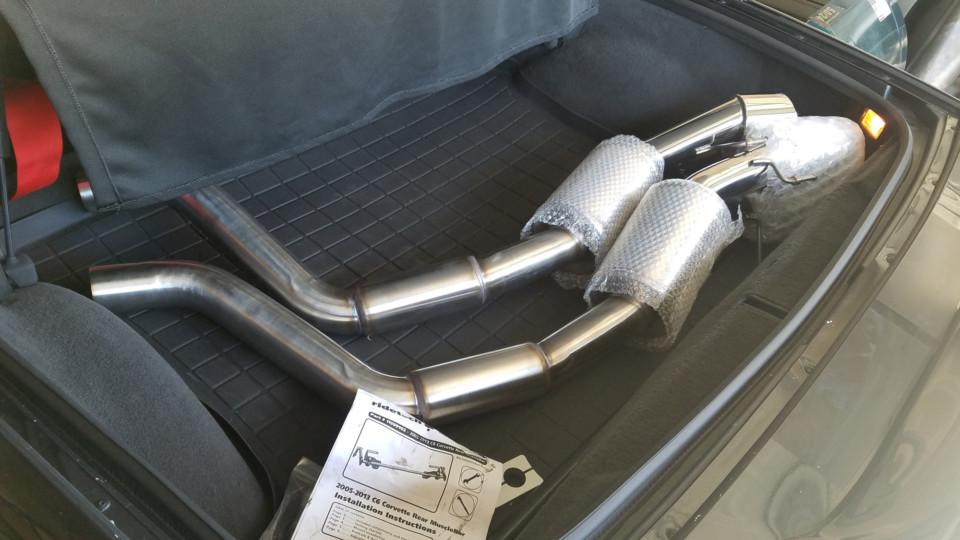
The new Billy Boat Bullet exhaust fits nicely in the trunk as we drive off to our buddy’s shop who was nice enough to let us use his lift.
I was pleasantly surprised to hear a couple things right out of the driveway — the noticeable lack of drone, and the ability to hold a conversation while driving. Those with NPP exhaust will know what I mean when I say these bullets sound very similar (or even better) to when you run the NPP system wide open.
Billy Boat makes an NPP version, but I opted to save weight and run the throaty note the LS7 deserves. What surprised me was the exhaust note wasn’t unbearable higher in the RPM range. The install probably took an hour or so with the help of my buddy Tim, because it requires dropping the exhaust mid-pipe. Other than that, it was a very straightforward affair which made the Z07 Corvette sound like it means business.
Aero Bits
I hear the Z07 package is “just an aero package,” which frankly, couldn’t be further from the truth. However, that doesn’t mean the C6Z couldn’t use a helping hand in the aero department. The Z07 package comes with some aero bits slapped on the car, such as the ZR1 front splitter, side skirts, and a rear deck spoiler. Since the car is lowered, I am barely able to get the lowest of low-profile jacks under the side to jack up the car; which means adding front or side aero was going to just be silly.
That’s where Innovative Auto Creations comes in. When I first saw its C6.5 Wickerbill Spoiler on Corvette forums, I knew I had to have it on my car. The owner, Phillip Gittens, assured me they care about quality and, while I may have to wait a little bit, the time lag from purchase to installation would be worth it. In fact, the piece I received was an exact C7 replica in shape, feel, and fitment. They even color-matched the hardware to the Forgeline rims, which creates a nice little accent piece if you look closely. I think the C6.5 Wickerbill Spoiler looks great and really adds to the overall aggressiveness of the car. It notably punctuates the rear end of the car with style and functionality.
A Winning Combination
All of these modifications allowed me to place first in the Street Machine Nationals in St. Paul, Minnesota, in 2018. I’ve been lusting after this title for quite some time now. It also got me First place in my autocross group in the CAMS class. I had help from a lot of people in both support and guidance. I am truly grateful for all the help and the opportunity to share the experience here at Corvette Online. Thanks for coming along with me on my journey. Good luck in yours.
